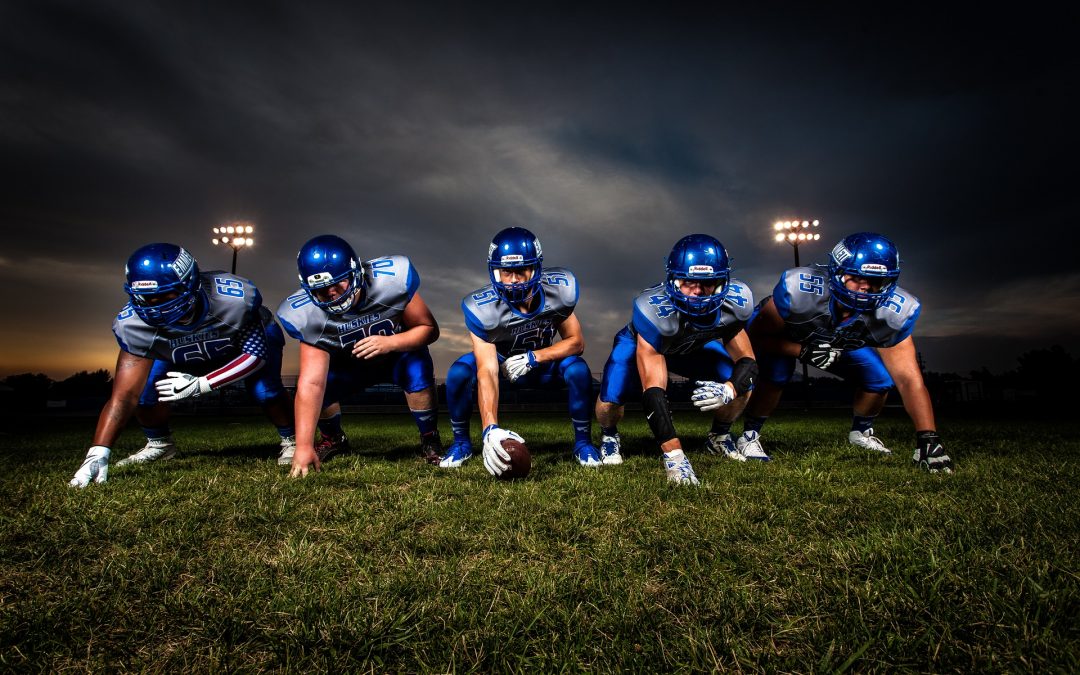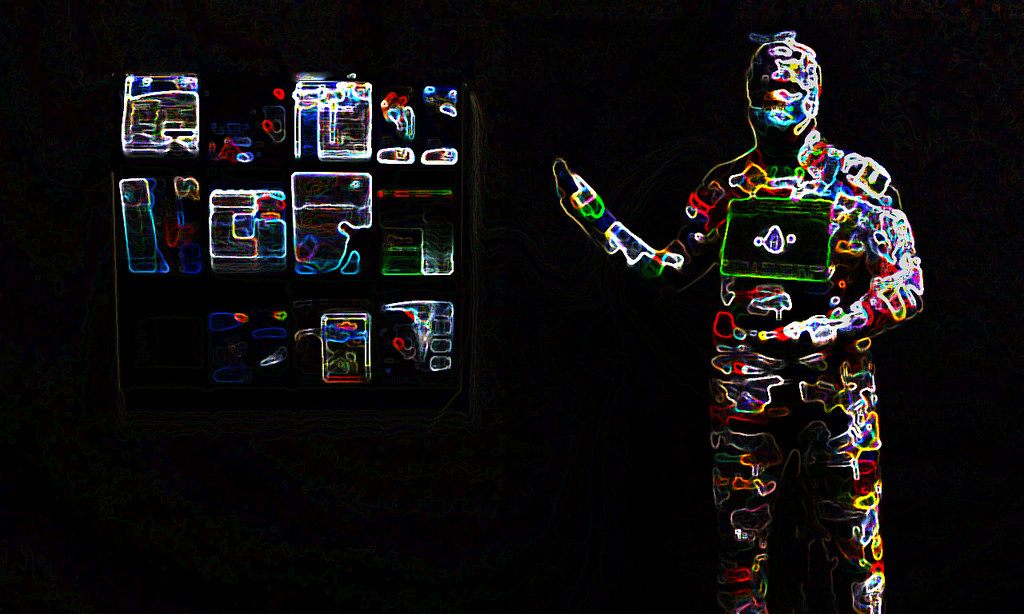
Smart Athletes Invest in Technology
Professional athletes make great money—but only for a few years—and far too often their financial gains are lost shortly after they stop playing.
While it varies athlete to athlete, on average an NFL player’s career will last just under four years and Major League Baseball players get a whopping 5.6 years, according to The Bleacher Report.
During that time, these pros can make (again, on average) anywhere from $1.5 million to $4.8 million.
That money has to last them a lifetime. Savvy players (and their agents and managers) know this, which means they know that they have to invest. Interestingly, more and more athletes are funneling their funding towards tech start-ups, whether as straight-up investments or as full-on partnerships.
A recent article in Entrepreneur discusses the start-ups, everything from coaching to photography apps, that NBA stars Steph Curry and Kevin Seraphin are backing.
The National Football League Players Association is so supportive of sports-meeting-start-ups that last year the organization facilitated a “tech tour.” Players toured companies in Silicon Valley, talking with game designers at EA, learning the ins and outs of businesses such as Uber, really seeing inside the innovations.
Why technology? There are several possible reasons. As the Entrepreneur article points out, these are athletes who’ve grown up with technology.
There’s also the potential for high returns—which could appeal to the competitive nature of professional athletes. Apple is still one best-performing stocks ever.
Regarding the start-ups, there’s evidence that playing a competitive sport makes you less-likely to be alarmed by high-risk investments.
Besides, while 90 percent of start-ups fail that’s still better odds than going pro. The NCAA reports that less than two percent of college basketball and football players make it to the pros. The odds are better for baseball, at just over nine percent.
Whether it’s the appeal of a competitive marketplace, the thrill of the risk, or simply wanting to invest in their own financial future, putting money into technology does seem to be trending among athletes.
Which is great, given the long history of pros going broke after successful athletic careers.
While technology and start-ups might seem like a risk for people new to the investment game, investment pros and pro athletes know, the only shots you’re guaranteed to miss are those you don’t take.

Wearable Tech for Animals Provides Incredible Insight
“If only they could talk.” How many times has an animal lover, or a farmer, lamented over this lack of communication?
What if there were technology available that didn’t quite let animals talk, but it did allow for information—lots of it—to be shared? Today’s wearable and ingestible technology for animals is doing just that, in ways large and small.
On the home front, one study showed that microchipping a pet meant that it was more than twice as likely for that pet to be reunited with its owner, if found and turned over to a shelter.
But microchips, which are simple, implanted, identification devices, are the tip of the animal tech iceberg.
GPS tracking is doing wonders for preservation and conservation efforts. Since 2013, scientists have been using GPS, combined with satellite weather and terrain information (the Environmental-Data Automated Track Annotation, or Env-DATA, system) to track the migratory patterns of the Galapagos Albatross, a threatened species.
Scientists from Commonwealth Scientific and Industrial Research Organisation (CSIRO), Australia’s national science agency, put tiny GPS trackers on thousands of bees in Tasmania. The goal is to gather data about their habits (where and how far they travel) and to monitor disruptions that could indicate a problem with the swarm.
According to their website, “If we can model their movements, we’ll be able to recognize very quickly when their activity shows variation and identify the cause.
This will allow farmers and fruit growers to increase the benefit received from this free pollination service, and will also allow us to monitor for any biosecurity risks such as Varroa mite.”
Health is key not just in migratory or at-risk animal populations, but also in farm animals where illness can spread rapidly and cause huge losses quickly.
iNOVOTEC Animal Care has created a stomach sensor (as in, it’s in the cow’s stomach) that enables farmers to catch illnesses earlier, making for healthier lives for the livestock, and saving money.
The system is able to track pH, temperature, estrus—essentially most of the information needed to proactively deal with any health problem or concern.
RFIDs (Radio-Frequency Identification), the small electronic devices that consist of a small chip and an antenna, are being used to huge advantage in India’s dairy industry.
From the home front of pet identification, to the migratory world of the birds and the bees, to the huge industry of dairy farming, it’s clear that the better the technology and data, the better the problem-solving.

E-Skin By Xenoma Could Change the Game for Athletes
Among the most intriguing innovations in wearable technology is high-tech clothing. Will we all be decked out in smart clothes from head-to-toe in the future? Will our shirts and sneakers be collecting data and making suggestions? Some people think so, and it could be athletes that are the first to roll up their sensored sleeves and getting down to business.
Companies are already designing high-tech clothing for athletes. For example, take “e-skin” by the wearable tech company Xenoma. This smart shirt tracks gestures and makes suggestions on form to athletes.
How does it work? E-skin is made with Printed Circuit Fabric, which has stretchable sensors and wires embedded into the textile during manufacturing. A centralized “hub” sits in the middle of the shirt, able to transmit data to a smartphone, tablet, or other devices.
Xenoma offers an e-skin software development kit so that developers can create apps that take advantage of e-skin’s innovative capabilities. The kit starts at $5000.
One use of e-skin that you can witness on video? E-skin for golfers. The shirt succeeds in analyzing the wearer’s swing, form and stance. Then it provides feedback to help the athlete improve. It could do much the same for any sport.
Xenoma also showed off e-skin this January at the Consumer Electronics Show (CES), this time for its gaming capability. Able to record data at 60-frames a second, e-skin can translate your movements into digital form, animating game characters on screen.
What more do you need from e-skin? Try machine washable (check), rechargeable (check), and long-lasting (it has a four-hour battery life). Xenoma is expected to release a consumer version for around $600 by mid-2017.
For gamers, especially of the VR variety, it could be an amazing way to get an immersive and active experience out of gaming. I expect it will be even better for athletes, acting as a very personal trainer that knows your body better than you do. For the rest of us, it can remind us to breathe and relax, let us know if our posture is poor, and encourage us to live a more active lifestyle.

Amazing Sports Tech Products at CES 2017
Every year, the Consumer Electronics Show unveils the hottest new tech products and trends, which predictably leave tech junkies drooling with anticipation. This is just as true for sports technology, which makes its debut in various iterations at CES to the delight of those like myself with interest in this growing field.
2017’s CES opened on January 5 in Las Vegas with just as much fanfare as usual, and with it a slew of amazing new products.
FitBit, which recently acquired Pepple, unveiled its new personal trainer app. It is also partnering with nutrition app Habit, indoor training bike company Peloton, and VR sports pioneer VirZOOM, and even Uber — though we may just have to wait and see what comes of these. Nonetheless, FitBit has proven itself an industry leader in athletic wearable tech.
Another product that cropped up at CES was Athlete Recovery Sleepwear, introduced by Under Armor. In partnership with Tom Brady, Under Armor’s product promises to help regulate body temperature and improve sleep for better daytime performance.
Other smart apparel at CES include the Pro Team Shirt, which comfortable operates as a heart monitor and GPS, a smart baseball training shirt from SwingIQ, and a smart running shoe by Sensoria and VIVOBAREFOOT.
Biometric data wearables are also proving to be a trend, and the less visible, the better. According to Sports Illustrated, a trend called “hearables,” as demonstrated by in-ear data trackers by Bodytrak, KUAI, and the Dash. These small devices are perfect for collecting internal metrics, like core body temperature, while also having the ability to play music. Fun!
All in all, it looks like another successful CES for athletes and for fans. It’s clearer than ever that as technology gets more advanced, so does the athletic prospects and fan experience of those that adopt it.

Ease Your Mind In This State-of-the-Art Virtual Relaxation Pod
If high stress levels tend to rule your days and you’re committed to living a healthier lifestyle, technology may be able to help you out. Cigna has unveiled the Cigna Virtual Relaxation Pod that gives you a chance to escape reality for a while — a two-minute break that works to push the reset button on your day.
The pod makes use of virtual reality technology using the Oculus Rift headset and headphones. You’ll enter a sound-insulated environment for a multi-sensory experience. The entire experience induces a state of mindfulness and relaxation, an opportunity to explore a virtual environment with expert-guided meditation. You’ll be locked in a sound-insulated pod and all you need to do is sit back, relax, and breathe deeply. You get to choose your environment: a Zen garden, a tropical beach, or a woodland campsite. You’ll go on a two-minute sensory journey that allows you to just let go, escaping from reality to experience a state of mindfulness.
In an interview with Medical Daily, Cigna Solution Architect Rachel Stein shares that Oculus technology helps transport the user to a relaxing environment where they can take advantage of the benefits of mindfulness therapy. The pod engages all the senses, making you aware of your current state of mind. The guided meditation helps you maintain a state of mindfulness, peace, and calm, in a relaxing setting.
The team behind the Cigna Virtual Relaxation Pod are hoping to see the pod installed inside hospital lobbies and other places where people tend to feel tense, nervous, or anxious. Just a couple of minutes in this pod can promote a meditative state which helps induce a state of calm and natural relaxation.
Would you be first in line to settle in to a virtual relaxation pod? Innovative experiences like these could be the next generation of health and wellness. Virtual reality can control the mind and in ways that make significant changes to our health and well-being.

The Power of Wearable Tech: Redefining Comfort and Style
As technology becomes omnipresent in people’s lives–people go about their lives smartphone in hand–it follows that we would no longer have to carry technology, but simply slip it on. Smartwatches and fitness trackers are the first widespread wave of wearable technology, but they certainly will not be the last. These wrist devices are already gathering vast amounts of information about their wearers that can be translated into lifestyle research, which will inevitably lead to even more convenient tech accessories.
The trick with wearable technology, however, has not been ease of use, but style. The trendsetters who pioneer new fashion styles could also pave the way for wearable tech, but it will need to look the part. The contradiction is in the name: for technology to be wearable, it will need to look enough like fashion. But tech geeks have never been known as fashion plates, so what happens when these two worlds collide?
For decades, Apple has been the frontrunner for sleek product design, and indeed, their Apple Watch–like their phones–can now command a wait. However, a wearable not only needs to look good enough to be shown off, but needs to function well enough to become essential. Otherwise, why wear it in the first place? Fashion is famously ephemeral, but wearable technology cannot afford to be so short-lived. Although new models will be released, both the functionality and aesthetic need to meet certain standards for wearable tech to be fully integrated into people’s lives.
Wearable technology also offers a valuable service to athletes that could make it a functional part of sports uniforms. Major League Baseball players experimented with wearable technology this past year on a voluntary basis. Approved devices were evaluated and tested before they were allowed on the field, and rules govern the gathering and use of information. But wearable technology could greatly help athletes and their support staff monitor players’ health and performance when they are most active.
Technology isn’t going away, which means it will likely become even more integral to our daily lives. What better way to weave technology into the day-to-day than by wearing it?

Are Wearables the Future of Space Exploration?
It turns out that the future of space exploration may look more like Avatar than other popular science fiction depictions. Those cinematic organic blue avatars are a form of wearables–mechanical exoskeletons that allow for remote control of robots. The immediate implications of such technology include deep space exploration that would drastically reduce risk to humans, as well as ambulatory capabilities for those paralyzed or without full control of their limbs.
NASA worked for years to build a robotic exoskeleton with The Florida Institute for Human and Machine Cognition (IHMC). Weighing in at 57 pounds, the X1 exoskeleton could both restrict and enable limb movement. The former capacity could provide valuable exercise for astronauts through muscle resistance, particularly during longer spells in space or on expeditions, replacing bulkier exercise machines. The exoskeleton can also transmit biometrics back to scientists planetside. As the technology is developed further, a machine exoskeleton could provide extra power for astronauts on the surface of a distant planet, helping them to walk with less gravity, for example.
Astronauts at the International Space Station tested another form of wearable technology: a joystick developed by the European Space Agency. The METERON (Multi-Purpose End-To-End Robotic Operations Network) research collaboration between countries like the Netherlands, Germany, the United States, and Russia is interested in giving astronauts in orbit the ability to teleoperate robots on the planet’s surface. The highly-sensitive joystick will simulate the force of objects on a planet’s or moon’s terrain, resisting the astronaut’s control.
Testing in the International Space Station will help METERON better understand how this kind of control–which most people experience in video games–feels for those operating in little or no gravity, with extended exposure to weightlessness. Officials from the European Space Agency explained their vision: “’Future planetary exploration may well see robots on an alien surface being teleoperated by humans in orbit above them—close enough for real-time remote control, without any significant signal lag, to benefit from human resourcefulness without the expense and danger of a manned landing.’”
Just a year ago, in late 2015, NASA gave MIT’s Computer Science and Artificial Intelligence Laboratory (CSAIL) the R5 robot known as “Valkyrie,” that is expected to be part of Mars missions. These humanoid robots can pave the way for astronauts’ arrival, reducing human risk, and stick around to assist astronauts on missions. “‘Human-robotic collaboration’” is seen as critical for longer missions like Mars.
Most recently, DFKI spearheaded the CAPIO project, which produced an exoskeleton that remotely steers a robot called AILA. This project improved on the fine motor skills of the robotic avatar: AILA can even send sensory feedback to the wearer of the CAPIO exoskeleton. The ideal test would involve sending AILA to the International Space Station and testing the remote connection from the planet’s surface.
All this research, development, and investment indicates that wearables are seen as the way forward for space exploration, at least until it can be made safer for humans. But even with improvements, wearables will likely still be an invaluable resource for exploring the true unknown, as we venture deeper and further into space.

How A.I. Is Ushering In The Age of Emotion-Reading
Sure, it’s convenient to have voice-controlled bots that can turn on our music or dictate emails, but the real dream for artificial intelligence has always been to create an emotionally intelligent machine. Only when A.I. tech can accurately read human emotions will we truly see the full potential for this technology to change our lives in fundamental ways.
We may be on the cusp of major A.I. breakthroughs, but culturally we have been fascinated by its possibilities at least since 1872, when Samuel Butler published the satire Erewhon to popular acclaim. “There is no security against the ultimate development of mechanical consciousness,” he wrote. And while A.I. has functioned as a sci-fi trope for good versus evil and human versus machine ever since, it’s only become more relevant as our technology has become more sophisticated. The ethics of A.I. are beginning to pose real and important questions now that our technology is catching up to our imagination.
It’s this convergence of the real and the impossible that makes A.I. so gripping. Take the instant popularity of the new HBO hit Westworld, which poses the creepy questions we’ll soon have to ask ourselves in real life. Questions like, can we empathize with robots? What nuances make a robot seem human? And have we reached the ultimate development of mechanical consciousness that Samuel Butler warned about more than a century ago?
In many ways, A.I. technology is still catching up to the sci-fi realities presented in shows like Westworld. But thanks to the new convergence of A.I. and emotion recognition software, we are closer than ever before. These three startups are on the forefront of bringing emotionally controlled machines to life, stepping irrevocably across a line that has always separated fiction and reality.
1. Affectiva
By combining emotion research with big data and machine learning, Affectiva emerged from MIT’s Media Lab to lead the field in making software that can accurately read a wide range of facial expressions. Affectiva claims to have the world’s largest emotion database to date, with more than 4.5 million faces across 75 countries analyzed. Of more than 30 patents filed to date, Affectiva has secured seven so far.
Think about it: virtually any app on your phone could be enhanced by Affectiva’s analytics, from dating apps that could read your interest not by a swipe but a smile, to games that self-adjust based on the player’s level of engagement. Thanks to Affectiva, we’ll become even more addicted to our phones. The company is also working on software that can read emotion through voice, which would have a host of practical applications like better customer service interfaces. For now the technology is still making the rounds on the tech conference circuit, but we can expect to see Affectiva to partner with advertisers, app developers, and more. After all, it’s all about the user experience and creating technology that feels even more personalized and indispensable.
2. Lightwave
Lightwave is an “applied neuroscience platform” that promises golden data to marketers keen to understand audience engagements at peak moments in sporting events, movies, and more. By tracking real time biometric data from wearable wristbands embedded with sensors, Lightwave measures audience engagement at peak moments. Created by 29-year-old former DJ Rana June, Lightwave grew out of her frustration at not being able to read her audience’s engagement in real time. Major companies including Pepsi and Unilever have already utilized Lightwave to measure fan engagement at events like the NCAA basketball championship. 20th Century Fox also used Lightwave to track audience reaction to specific moments throughout The Revenant, providing much more precise feedback for the movie industry than self-reported metrics that were previously the benchmark for audience engagement.
3. Emotient
Earlier this year Apple bought startup Emotient in a bid to take the lead in the emotion recognition race. Emotient uses facial recognition technology to read feelings. While we’re still waiting to see how Apple will integrate Emotient’s technology, it could be used to help advertisers read consumer reactions, or to help doctors interpret pain levels in patients. Emotient can accurately read different emotional responses based on faces in a large crowd of people, which could provide valuable feedback for marketing insights in a number of different fields.
Reading The Future of Feelings
Affectiva, Lightwave, and Emotient are just a few of the startups trying to solve the puzzle of how big data, artificial intelligence, and facial recognition algorithms can accurately interpret human emotion. The winning combination will likely combine facial recognition software with biometric sensors for more nuanced data feedback. It’s not hard to see how this would transform marketing, healthcare, and other industries. Once this technology goes mainstream, we’ll be one step closer to stepping over that invisible line that has long separated sci-fi’s version of A.I. from the very real future we are living into.

The Importance of Keeping Sport Venue Tech Up-to-Date
These days, the stadium is more than just a vessel–it’s an experience in and of itself. With new technology cropping up and improving every year, sports venues are doing their best to stay up-to-date. Certain elements are this are more than just nice to have–they are both necessities and opportunities.
Take wifi, for example. While a decade ago, fans might be content to keep their smartphones away during a game, the stakes are higher now. Connectivity is a priority for younger fans, and Cisco reports that Internet is “as important as air, water, food and shelter to one in three college students and young professionals.” This may sound hyperbolic, but think about it. Many of us live a significant portion of our lives online, with our social and professional lives hinging on Internet access. Without wifi, you’re probably going to lose your fans at halftime.
Then, there’s improved home technology. High definition big screen TVs make viewing a game at home just as awesome, twice as comfortable, and much cheaper than visiting the game physically. So there has to be something at the stadium fans can’t get at home. How about in-arena interactive hotspots? Sports leagues and brands are both leaning into this trend by building high-tech experiences that enhance fans’ stadium experience.
But don’t forget, the smartphone might be the biggest opportunity of all, and with fast, easy-access wifi, both advertisers and national leagues can hook into fans’ phones. Think seat upgrades, easy food and beverage purchasing, insider facts and insights, or any other number of modern, digital conveniences.
For an example of a high-tech stadium, look no further than Brooklyn’s Barclays center, one of the most connected stadiums in the world. Thanks to smart design and innovative ideas, fans can upgrade seats and even get notifications when the restroom line is shortest.
There’s also the in-process Mercedes Benz Stadium, which I’ve blogged about previously. In partnership with the Atlanta Falcons, IBM, and Daktronics, the smart stadium will give fans 360-degree views of the on-field action, employing state of the art sustainable technologies all the while. The goal is to give fans the best experience possible, complete with awesome technology, while using as little energy as possible.
If the stadiums of the future keep integrating technology that delights fans, provides perks, and saves energy to boot, the world of sports is in for an exciting ride in coming decades. After all, sports are all about connecting communities over shared passions. What better way to do that than going all in on digital?

When Virtual Reality Meets Fitness Tech, The Mind and Feet Run Wild
Virtual reality technology is slowly seeping into several industries, including marketing and casino gaming and even travel, as companies realize the power of virtual experiences. Now, we’re seeing virtual reality technology making waves in the fitness industry with the introduction of a full-body fitness program that aims to help players improve their fitness level without having to set foot in a gym.
Ryan DeLuca of Boise, Indiana, retired from Bodybuilding.com and then teamed up with tech designer Preston Lewis to launch a new company centered on fitness: Black Box.
Black Box creates a full-body workout program customized for the user and allows players to complete their challenges online with others from their home or office. Workouts are completed entirely in virtual reality so a gym membership becomes obsolete.
The creators of Black Box are currently testing the concept and experience in their office, working through all the drill sequences and developing a scoring system. It’s been coined, ‘the gym of the future’ and could very well lead a new generation of gym experiences that give users a chance to completely immerse themselves in a fitness experience while getting in shape.
The game is designed as an adventure or mission so it doesn’t feel like you are working out. According to Black Box VR, “You aren’t working out. You are saving a city. Or solving a mystery. Or finding the treasure….Functional fitness in a fictional world.”
The company has developed three 40-minute exercise routines with different scenarios and have integrated props, such as electronic cable systems, for resistance training into the game. The app that goes along with the game keeps track of performance and all the details of the workout so the user can make adjustments and set goals.
Black Box is getting ready to revolutionize the fitness industry with a no-gym-required workout program. It could very well be paving the way to the future of fitness where simulating movement in a fictional world is just as effective — and maybe even more so — than lifting a dumbbell or running on a treadmill at the local gym.